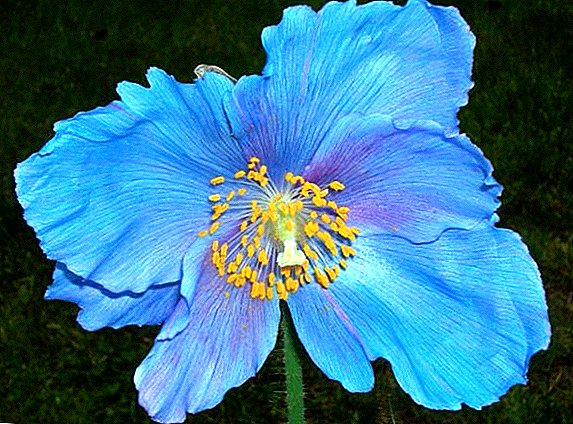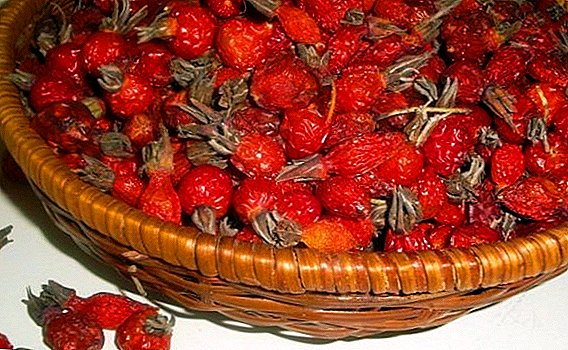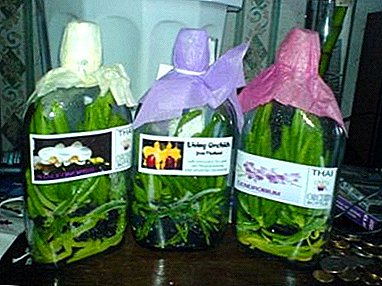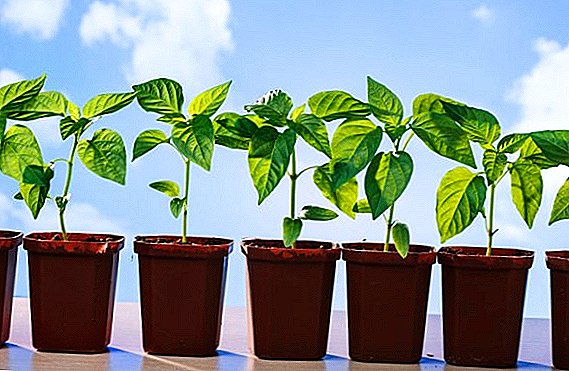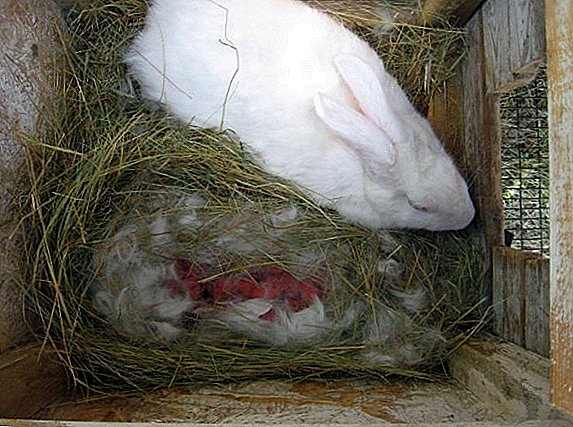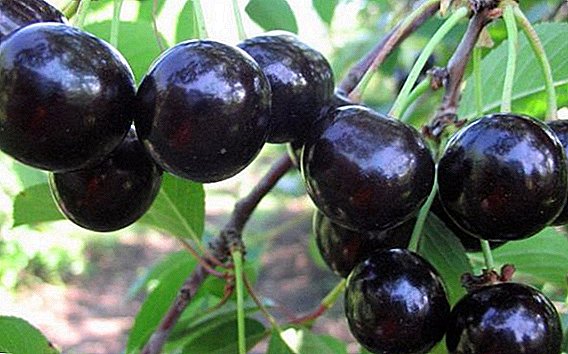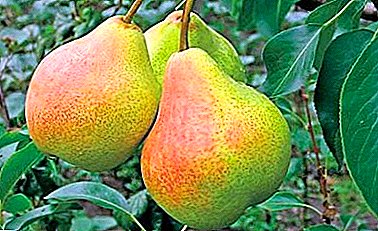
The pear, unlike the apple tree, was only recently not so popular. The reason was the low frost resistance of this culture.
But over time, new varieties successfully filled this gap. The variety "Hera" is a new brainchild of Russian breeders.
What kind is it?
Variety belongs to winter view, full ripeness of fruits is achieved after the second half of September. High yield and very frost resistant. Tree of medium height, the fruits of universal purpose.
Winter varieties also include January, Chudesnitsa, Bere Russkaya, and Fairy.
Breeding history and breeding region
 "Hera" owes its appearance to two parental varieties "Reale Turin"and"Daughter of Dawn".
"Hera" owes its appearance to two parental varieties "Reale Turin"and"Daughter of Dawn".
A variety was obtained at the All-Russian Research Institute of Genetics and Breeding of Fruit Plants named after Michurin, with the participation of authors such as S.P. Yakovlev, A.P. Gribanovsky, N.I. Saveliev and M.Yu. Akimov.
Included in the State Register of the Central Black Earth region.
In this region, such varieties do well: Duschess, Rossoshanskaya Dessert, Muscovite and Cosmic.
Pear "Hera": description of the variety and photos
The average height tree has neat small crown, narrow-pyramidal shape. Fruiting mixed, as on annual twigs, and on perennial.
Shoots straight, medium thickness, characteristic brown color, do not possess hairiness. Chechevichek on the trunk a little. Smooth buds tightly pressed to the trunk, have a rounded shape and medium size. The leaves are curved, dark green, slightly oval-shaped.
The dimensions of the leaf plate are medium, there are small notches along the edge, at the end there is a small pointedness. The surface of the sheet is shiny and smooth. The petiole is medium in length and thickness.
Fruits of a grade are considered large. Their average weight ranges from 180 g to 250 g. Fruits of the correct form, smooth and wide-pear. The skin of the fruit is rough, somewhat dry and has an average thickness.
Large fruits can boast Krasnobokaya, Elena, Victoria and Lel.
The color is mixed, green is the main color of the fruit, the cover shade is red, there is an orgassed net. Peduncle oblique, small.
 The funnel is small or almost imperceptible. The cup of the pear is open, the saucer does not fall, the size of the saucer is medium. The heart is small, round shape. Brown seeds are found in closed seed cells.
The funnel is small or almost imperceptible. The cup of the pear is open, the saucer does not fall, the size of the saucer is medium. The heart is small, round shape. Brown seeds are found in closed seed cells.
Pulp of fruits of this grade fine-grained, has a cream shade. The structure is granular and oily. Fruit taste sweet and sour, with a high content of juice with a light aroma. On a five-point scale, the Hera pear was rated at 4.3 points.
Variety pears "Hera" description of the chemical composition:
| Composition | amount |
|---|---|
| Dry matter | 14,5% |
| Sugar | 9,6% |
| Acids | 0,4% |
| Vitamin C | 8.8 mg / 100g |
| P-active substances | 86.0 mg / 100g |
For more information about the variety and see the pears "Hera" can be in the photo below:




Specifications
Fruit on the tree can take off from the third week of September. Actively and fully pear "Hera" begins to bear fruit 4-5 year landing.
REFERENCE: The fruits of this variety in the conditions of proper storage can not lose their commercial quality up to 160 days.
The variety is very different good yields and almost immune to frost. Under experimental conditions of artificial freezing, the variety withstood the temperature of -38 ° C. Minor damage of about 1.8 points was seen only on annual branches.
The high yields are demonstrated by the following varieties: Bere Bosk, Cathedral, Noyabrskaya and Elegant Efimova.
 Self-fertility in "Gera" is very low. For a full fruit ovary on the site need to have other varieties of pear for pollination.
Self-fertility in "Gera" is very low. For a full fruit ovary on the site need to have other varieties of pear for pollination.
But if you make two or three grafts of other varieties on one tree, then it can easily do without third-party pollinators.
On the subject of the demanding of the soil to the conditions and irrigation, the variety is being tested.
Planting and care
In Russia, in regions with a temperate climate, it is customary to plant a pear. in the autumn period. A place to plant should be chosen very carefully, given that the pear is a fairly tall tree.
The distance from the fence, buildings or other trees should be not less than three meters and more is better.
IMPORTANT: Young pear seedlings do not survive well and grow slowly for the first two years. This is a consequence of a bad root system.
Landing pit should have at least one meter deep and about 80 cm in diametercan be more. If the site is dominated by sandy soil, then its mixed with humus and 2-3 buckets of peat. Best pear grows on loam with the addition of black soil.
 It is customary to prepare the pit a week before the intended landing. It should be made humus and coarse sand in equal parts, about two buckets, and three tablespoons. l potassium sulfate.
It is customary to prepare the pit a week before the intended landing. It should be made humus and coarse sand in equal parts, about two buckets, and three tablespoons. l potassium sulfate.
Fertilizers mix well with the soil for backfilling and pour two buckets of water. After 6-7 days, the pit is completely ready for planting a young tree.
The first month the tree requires good watering until it is fully acclimatized. Also in the first year, the pear needs a competent pruning of the upper tier.
In the future, the pear variety "Hera" does not require frequent watering, as its roots are capable of extracting moisture well from the ground. The only exception is periods of prolonged drought. Abundant watering should be three times during the summer, before flowering, during the ovary of the fruit and autumn in October.
REFERENCE: Pear "Hera" is not so much in need of trimming, like other varieties. The formation of its crown occurs in a natural way and needs only a small adjustment.
Pear pruning is done according to the following scheme:
- Thinning heavily thickened branches for full sunlight access to all branches.
- In order for the tree not to stretch heavily, its trunk is cut to one quarter.
- Cut-off places must be treated with a special tool.
- All diseased or dry branches should be removed, as well as those that grow at a right angle.
- Cuts should be made at the base of the branches, no need to leave hemp.
 Since “Hera” is a fairly cold-resistant variety, He does not require serious shelter for the winter. Only young saplings need special care.
Since “Hera” is a fairly cold-resistant variety, He does not require serious shelter for the winter. Only young saplings need special care.
With the onset of cold weather, they are showered with spruce branches and snow. As a rule, this is enough. Mature trees should be covered with snow in the area around the tree circle.
Winter-hardy varieties include: Rogneda, Svetlyanka, Sverdlovchanka and Samara Beauty.
Diseases and pests
"Hera" has good resistance to such diseasesas //selo.guru/ptitsa/bolezni-p/gribkovye/parsha.html, septoriosis and antomosporiosis. But these are not all diseases that can affect the pear tree.
- Black cancer When there is a defeat of leaves, branches, crowns and fruits.
- Monilioz. Pear fruits rot right on the branches.
- Bacterial burn. The defeat of the tree, leading to his death.
- Cytosporosis. When the disease becomes red, the bark dries out.
- Mealy dew. Manifested in the form of white bloom on the shoots and leaves.
- Rust. Leads to too early fall foliage.
- Milky shine. It affects mainly the fruits that die off right on the branch.
Particularly resistant to parasites in the variety has been identified. A pear is struck not only by diseases, but also by pests living on a tree.
- Small moth. The caterpillars of this parasite infect the fruit of the pear.
- Green aphid. Damages the leaves and promotes the development of soot fungus.
 Listoblashka. Strongly affects, up to destruction, all parts of the tree.
Listoblashka. Strongly affects, up to destruction, all parts of the tree.- Listovertka. Chooses the habitat of the leaves, folding them into a tube.
- Pear mite Pulling the sap from the foliage disrupts the normal growth and development of the tree.
The following measures are taken to combat tree diseases and to destroy parasites:
- Fall leaves in the autumn is removed and burned, since it is on it that almost all the parasites and viruses of the disease overwinter.
- Autumn processing of wood with lime will protect against pests hibernating on the bark.
- Mandatory inspection of the tree during the entire period, starting in early spring and ending in late autumn.
- The treatment of the circle of the trunk of a urea solution and thorough digging.
At the slightest detection of disease to conduct spraying in relation to the disease or pest. For prevention, you can treat the tree in spring, summer and autumn with insecticides.
Pear "Hera" is good for its unpretentiousness to temperature and compact crown. With proper care, it will delight with its magnificent fruits not one generation.


 Listoblashka. Strongly affects, up to destruction, all parts of the tree.
Listoblashka. Strongly affects, up to destruction, all parts of the tree.